
Extended Forecast
Valid: Sat 09 Jun 2012 06:00 to Sun 10 Jun 2012 06:00 UTC
Issued: Fri 08 Jun 2012 04:37
Forecaster: TUSCHY
A level 1 was issued for N-Italy and parts of Austria mainly for severe wind gusts, large hail and excessive rainfall amounts. An isolated extreme hail event can't be ruled out, mainly over N-Italy and S-Austria. An isolated tornado event may occur.
SYNOPSIS
A gradually relaxing negative NAO forecast (with tight ensemble member clustering) increases confidence in the evolution of a more zonal flow pattern at least over W-Europe with an eastward progression betimes. Ahead of this pattern change, an eastward propagating longwave trough over W-Europe is forecast to approach the W-Mediterranean during the time frame of interest, accompanied by an extensive mid-level cool down over most of C/S Europe. A briskly SW-erly flow affects most of C/SE Europe and assists in rapid NE-ward advection of a moist air mass.
DISCUSSION
... SE Europe ...
Overall pattern favors supportive conditions for severe DMC for most of C/SE Europe. Favorable placement of the upper trough (centered over France/W-Mediterranean) not only assists in the NE-ward advection of an already impressive EML plume (e.g. captured well by 60390, 00Z with roughly 4 km deep dry adiabatic lapse rates atop the inversion) but also keeps mid-level lapse rate magnitude strong all the way to SE Europe with ongoing differential temperature advection (aforementiond cool down atop strong LL/mid-level WAA regime). Main focus therefore will be magnitude of BL moisture quality. Past 7 days featured at least 2 significant frontal intrusions all the way into the C/SE Mediterranean which kept BL moisture on the lower end side (e.g. surface dewpoints in the lower tens as of 8th June, 3Z). With strenghtening WAA on Friday, we may see up to 24 h moisture recovery before initiation starts. Despite current marginal magnitude and depth of the BL over most of SE Europe, two reasons increase confidence in gradually improving BL moisture:
a) With strong WAA in place, airmass south of the frontal zone (e.g. south of Hungary/Ukraine) reveals strong capping, which assists in moisture trapping and a deepening BL
b) Ongoing evapotranspiration also adds some moisture to that air mass. A glance on CPC review of May 2012 indicates positive precip. anomalies of 150-200 % just in this area of interest with additional rain during the past week
Hence, we can't argue against a moderate dewpoint increase until Saturday, probably into the mid tens (as EZMWF forecasts) with significantly higher values possible along any residual boundary/convergence zone. NE-ward pushing EML atop expected BL recovery yield widespread capped 1-2 kJ/kg MLCAPE over a broad area with locally higher values likely.
Initiation will be the main problem during the forcast with only subtle short waves glancing the area to the north. A more significant impulse approaches from the west during the end of the forecast but probably won't play a major role until Sun 06Z. Hence initiation is bound to:
a) SE-ward moving outflow boundaries from overnight's convection over parts of Austria/Hungary and Slovakia. It is not possible to pinpoint any area of concern right now, but quasi-stationary boundary over the aforementioned areas may be the focus for initiation itself but also sends a few boundaries to the south, wich themselves may be the foci for initiation later-on.
b) Areas with overlap of favorable orography, abundant LL moisture and strong diabatic heating may also locally break the cap (e.g. W-C Romania).
For now we went with a level 1 for those areas, where forcing, shear and cap strength look most promising for organized DMC. 20 m/s DLS and also strong wind field in lowest 3 km will be more than adequate for rapid storm organization, given aforementioned themodynamic profiles. Only isolated DMC is forecats right now during the daytime hours with an increase during the evening and night hours (as background forcing slowly strengthens) and numerous clusters of organized storms traverse the boundary from W to E. Large hail and severe wind gusts accompany those clusters, with a few extreme hail events likely mainly during the discrete stage of any well organized multicell/supercell (e.g. Croatia and Hungary). An isolated tornado event (enhanced SRH along any boundary) and locally heavy rainfall accompany that activity. Both, the risk for swaths of severe wind gusts (MCS events) and isolated extreme hail events may result in an upgrade of parts of the level 1 area. However, Friday's convection will play a major role in Saturday's event, so we stick with a broad level 1 for now.
Similar conditions exist over most parts of the Ukraine with weaker CIN, so scattered CI (convective initiation) is more likely. Somewhat weaker 0-3 km shear and CAPE point to a potential high-end level 1 situation and concentrated swaths of severe hail/severe wind gust events may also require an upgrade later-on.
We did not yet expand the level 1 to E-Romania and Bulgaria due to ongoing uncertainties regarding initiation. Any storm, which is able to break the cap will become severe (at least temporarily), given downburst and large hail potential. Weak background forcing and shear may limit coverage and severity of storms, so right now we do not expect the issuance of a level 2 that far to the south. The level 1 may be expanded more to the SE, if confidence in initiation increases and if signs for a few longer lived storms appear ( e.g. weak shear may limit updraft entrainment).
It is important to note that one should not focus on the exact placement of the level 1 area that far out as this area only reflects the model mean regarding severity and coverage of storms. The mesoscale will play a major role during that time period!
... N-Italy ...
EZ and GFS diverge regarding degree of ongoing convection on Saturday morning, which is also reflected in diverging thermodynamic profiles over that area (GFS the more bullish one regarding CAPE). Nevertheless, both models show good BL moisture during the daytime hours, before the main trough axis approaches from the west during the afternoon hours onwards. Overlap of 25 m/s DLS and 1-2 kJ/kg MLCAPE indicate an augmented risk of well organized multicells and supercells with large hail and damaging wind gusts the dominant risk. An isolated tornado event (modest LCL heights) and locally excessive rainfall (especially with storm clusters) may occur. Again, daytime activity will be probably on the lower end side (although Alpine convection may play a role with southward moving outflow boundaries and approaching vort lobe may increase CI during the afternoon hours onwards) with overall synoptic pattern favoring evening/night time clusters, which cross N-Italy from W to E, moving into parts of Austria thereafter. Again, a level 1 covers that risk for now (due to ongoing uncertainties). However parts of N-Italy may need an upgrade later-on.
...Poland ...
Embedded in the SW-erly flow regime, upper waves cross Poland from SW to NE with differences in timing and amplitude within various models. Also, moisture advection to the north remains highly uncertain between EZ and GFS (reflected in CAPE forecasts). In case of more robust moisture advection (GFS), roughly 500 J/kg MLCAPE and 20 m/s DLS overlap may assist in a few organized multicells with isolated large hail and strong/isolated severe wind gusts possible during the afternoon hours. The main risk is centered over N/C/E Poland. A level 1 may be needed in subsequent updates.
... NE-Algeria/Tunisia and the C-Mediterranean ...
Parts of the models remain optimistic in isolated CI (especially over N-Africa). Given strong background shear and an EML/a deep and well mixed subcloud layer, large hail and severe downbursts will be the main risk. Right now, limited coverage and questionable CI preclude a level 1. Even lower confidence exists over the C-Mediterranean, but kept a 15-% thunderstorm area to highlight the existing low-end chance for initiation.






















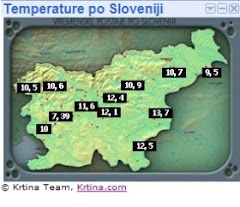


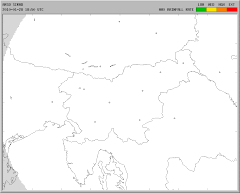

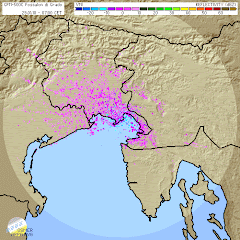
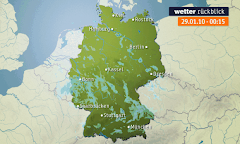
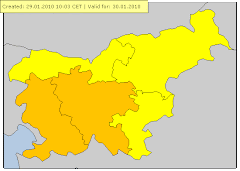
Ni komentarjev:
Objavite komentar